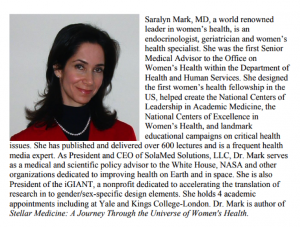By: Yaa Haber
On June 14th, 2017, I attended the 3rd Women’s Healthcare Innovation Leadership Showcase (WHILS) at the Rutgers Robert Wood Johnson Medical School in Piscataway New Jersey. It was a phenomenal experience to be surrounded by such a diverse group of women, both scientists and clinicians, who have a passion for addressing issues facing women in science and technology. One of the comments that redefined my thinking was shared during a presentation by Dr. Saralyn Mark, the president of iGiant (impact of Gender/Sex on Innovation and Novel Technologies). During her talk she mentioned that most new technologies are created by men and tested by men, and when used by women they are not always adaptable to the unique needs of women. Two examples that she provided, which have stuck with me were the following: a) personal protection equipment for women, b) touchscreen responsiveness of the iPhone.
In her first example, she described that during the Ebola outbreak in Africa, the personal protection equipment worn by the workers were designed primarily for men. Women who dawned the same equipment, experienced some gaps in the head pieces due to the shape and size of the women’s heads and as a result, there was increased risk of the virus being transmitted to the women. More of the women workers became infected than the men. If the equipment was tested for women prior to use, these inadequacies would have become evident sooner.
In her second description concerning the touchscreen responsiveness of the iPhone, Dr. Mark mentioned that touchscreen technology was both designed and tested by men. Women have more tactile receptors on their fingers than men. As a result, when they use the device, in comparison with men, they end up having to press their selections harder and longer leaving them with increased strain on their hands. If the touchscreen technology was beta tested on women just as much as men, this nuance would have become apparent. I own an iPhone myself and have noticed the annoyance of having to repetitively press my selection before the phone responds. Prior to hearing Dr. Mark’s presentation, I didn’t really think about why my phone was unresponsive at times. Now that I know my phone was not designed with my needs in mind, I realize that there is a new opportunity here. This has fueled my passion to pursue R&D that is geared towards providing technology and innovative options suited to the unique needs of women.
In both examples, her message was clear to me. The lack of design accommodations and testing of innovative technology to suit the needs of women may lead to detrimental effects in the future. As a result, there is a need to provide technology options for women just as much as for men. This idea, that the differences between men and women should be accounted for during the design, implementation and application of technology is one of high importance and has reframed my thinking about my own scientific questions.
In my current research project, I have mostly collected data on men and have not even begun to acknowledge how my findings apply to women since there were so few women participants. Thus, while I have only identified a partial answer to my research question, I can only answer the question fully when I have sufficient data on women. This new way of thinking about research is one that should be applied to so many other fields. For so long, I have watched other scientists answer their research questions based only on data from males, and insist that they have completely answered the question; ignoring the lack of answers using female data. For example, if a pharmaceutical company used this approach and performed clinical trials assuming that the male response would directly translate to females, there can be increased risks of adverse events in the female population because of the lack of female data. This could potentially cause serious consequences. For this reason, science must pursue a complete answer to any research question by ensuring adequate data from both male and female perspectives.
Within the fields of science and engineering, many strides have been made in recent years. However, when it comes to customizing technology based on the unique needs of women, more work is still needed. Dr. Mark inspired me with her speech to pursue opportunities that encourage customization of technology for women just as much as for men. It is wonderful to create technologies that advance humanity. However, if the innovation advances the needs of men while creating new problems for women, this must be addressed.